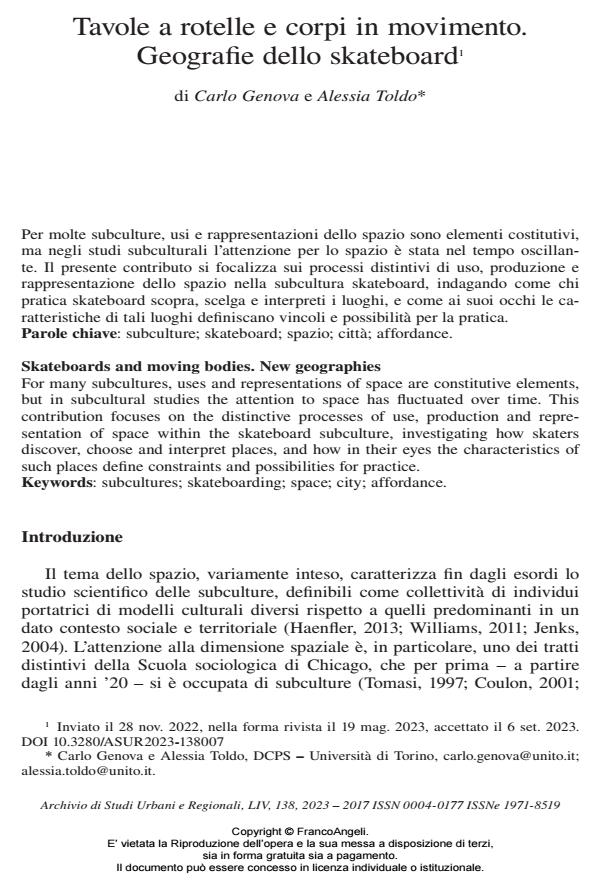Skateboards and moving bodies. New geographies
Journal title ARCHIVIO DI STUDI URBANI E REGIONALI
Author/s Carlo Genova, Alessia Toldo
Publishing Year 2024 Issue 2023/138
Language Italian Pages 24 P. 136-159 File size 449 KB
DOI 10.3280/ASUR2023-138007
DOI is like a bar code for intellectual property: to have more infomation
click here
Below, you can see the article first page
If you want to buy this article in PDF format, you can do it, following the instructions to buy download credits

FrancoAngeli is member of Publishers International Linking Association, Inc (PILA), a not-for-profit association which run the CrossRef service enabling links to and from online scholarly content.
For many subcultures, uses and representations of space are constitutive elements, but in subcultural studies the attention to space has fluctuated over time. This contribution focuses on the distinctive processes of use, production and repre¬sentation of space within the skateboard subculture, investigating how skaters discover, choose and interpret places, and how in their eyes the characteristics of such places define constraints and possibilities for practice.
Keywords: subcultures; skateboarding; space; city; affordance.
Carlo Genova, Alessia Toldo, Tavole a rotelle e corpi in movimento. Geografie dello skateboard in "ARCHIVIO DI STUDI URBANI E REGIONALI" 138/2023, pp 136-159, DOI: 10.3280/ASUR2023-138007